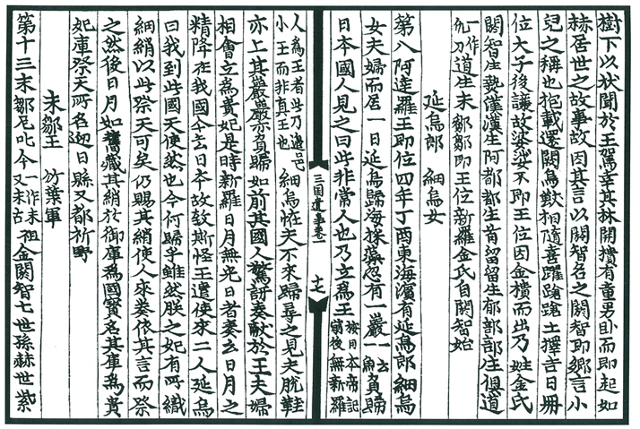KOREAN LITERATURE CORNER - July 2025
By Josh Kim
July is a month of summer and sun, so let’s discuss a myth and symbol that circle it.
In the old kingdom of Silla, there was a fisherman named Yeonorang (연오랑). He and his wife Seonyeo (Seonyeo) lived peacefully by the eastern sea. One day, as Yeonorang stood on a rock near the water, it mysteriously began to move, and it carried him across the waves to Japan. There, the Japanese people believed him to be noble and made him king.
Statue of Yeonorang (연오랑) and Seonyeo (세오녀) in Pohang, Gyeongbuk
Seonyeo searched for her missing husband. Near the rock, she found his shoes. She climbed the rock and it carried her to Japan as well. The Japanese named her queen.
However, their departure left a strange silence back in Silla. The sun and moon lost their light. Darkness fell and people panicked.
The Silla court sent word to Yeono and Seo, asking them to come back. Yeono said he could not as he was in Japan by heaven’s order, so instead the king and queen sent cloth woven by Seo back to Silla.
The myth of Yeonorang and Seonyeo is recorded in Samgukyusa, Book 1 Giyi section.
The court held a shamanic ritual, using the cloth, offering it to the heavens. With the ceremony, the sun and moon returned to Silla, and balance was restored. The cloth was placed in the treasury and deemed a royal treasure.
But who governs the sun in Korean myth?
We call it Samjok-o (삼족오), the mysterious three-legged crow said to live in the heart of the sun. In ancient murals from the Goguryeo kingdom, the Samjok-o represents solar power, royal authority, and cosmic harmony. Though never mentioned by name in the above myth, the disappearance of the sun evokes the idea of a guardian gone missing. Without the crow’s presence, light vanishes. Without balance between realms, the world falters.
Some scholars believe the Yeonorang story isn’t just a myth—it’s a coded tale of eclipse, divine legitimacy, and cross-cultural tension. Yeonorang becomes king in Japan, while his homeland suffers until he symbolically reconnects. The solar disorder and restoration parallel the flight (or absence) of the Samjok-o itself.
The three-legged crow (삼족오) appears often on ancient Korean artifacts, such as Goguryeo (고구려) cave murals.
Goguryeo murals: Ssangyoungchong from late 5CE (left), Goguryeo’s ‘오회분 5호묘’ (Grave number 5 in Ohhoebun) ‘오회분 4호묘’ (Grave number 4 in Ohhoebun) from mid 6CE




